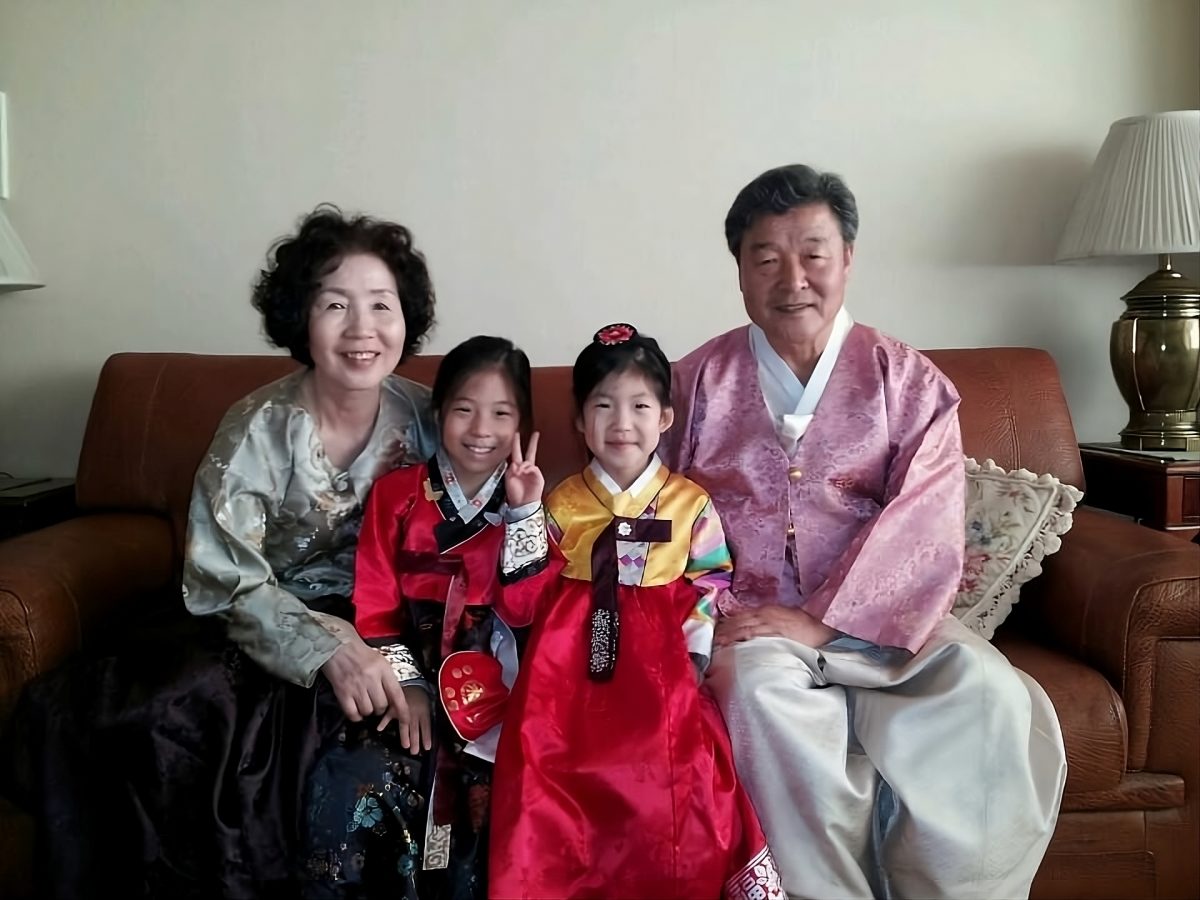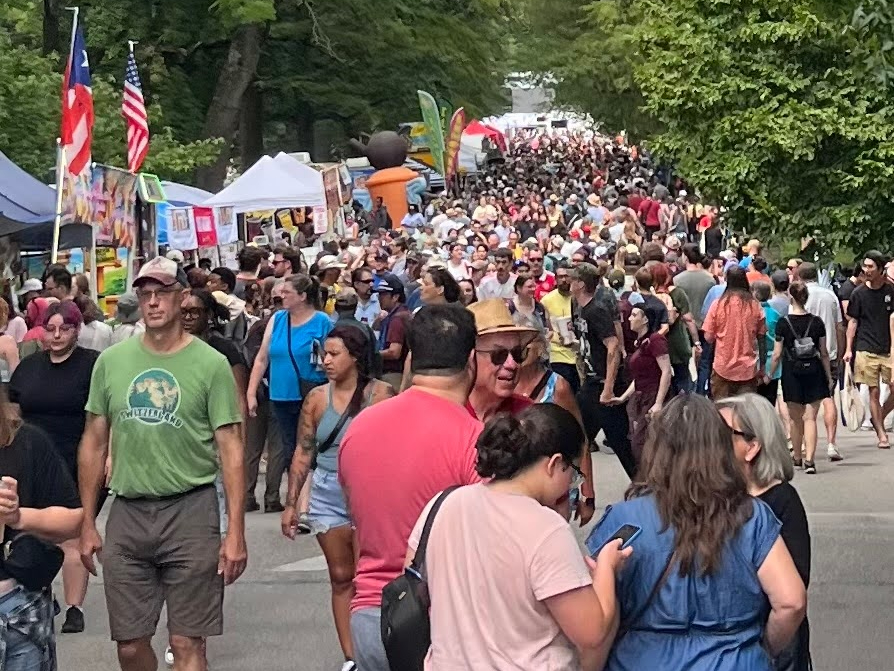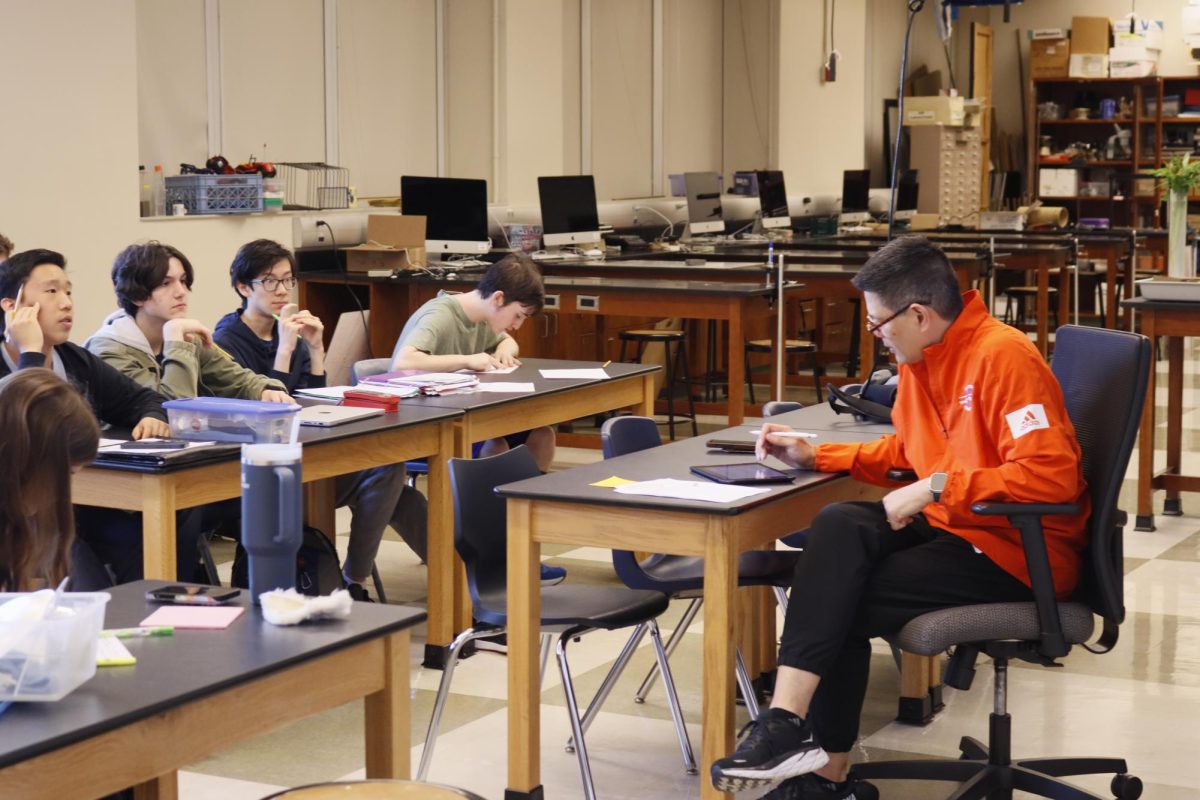All You Need is Love
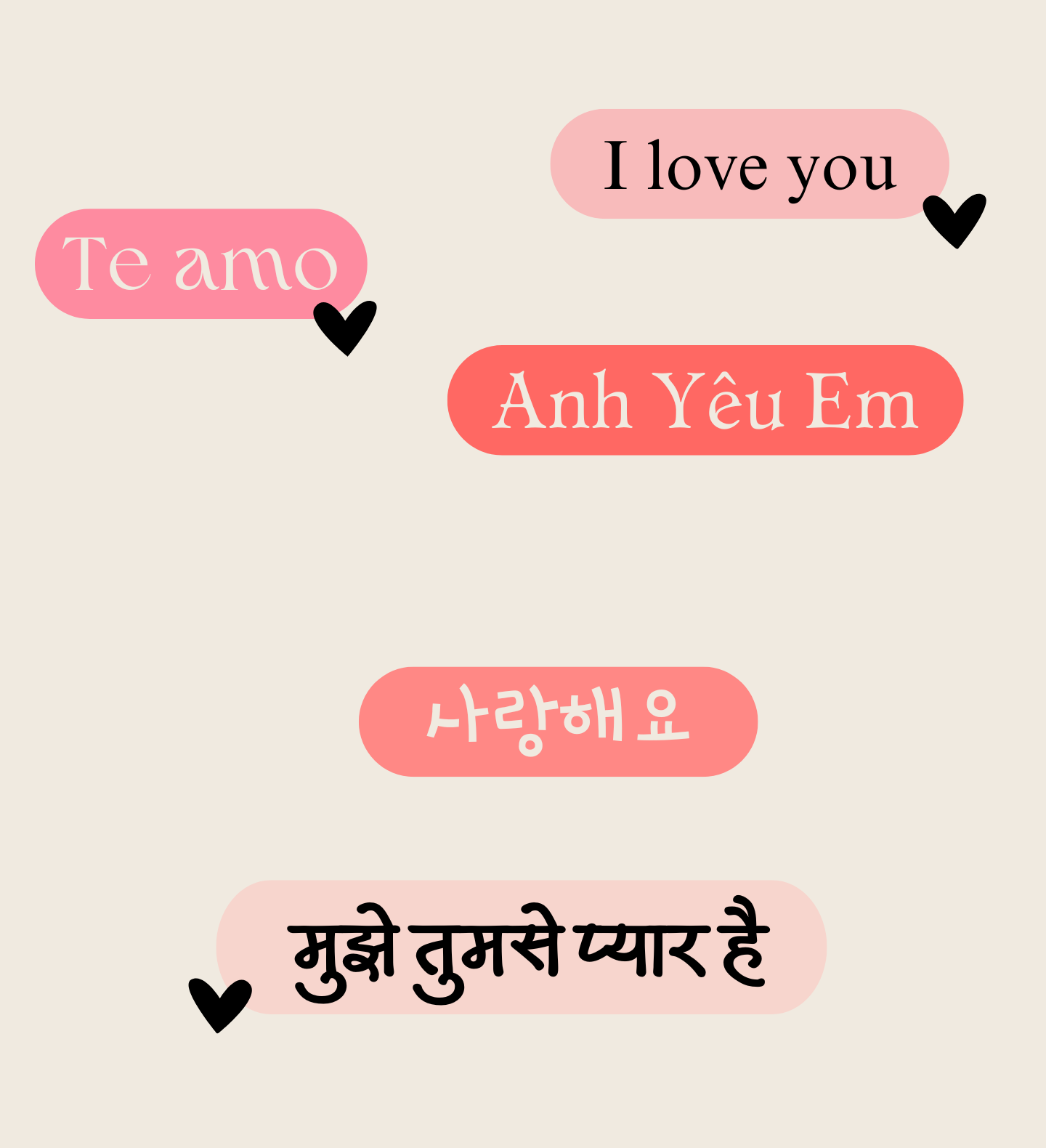
Smiling chocolate vendors, giving away free chocolate and kind compliments on the street, welcoming locals, dancing with one another in great spirits and a community filled with red-themed decorations is what one would find if they walked down the streets of Peru on El Dia de Amor y La Amistad.
Whether people tell one another ‘te quiero’ or ‘te amo,’ love is expressed through many actions that one could describe as a scene in a romance film.
Love is a critical aspect of Peruvian culture. Showing loved ones and friends appreciation and ensuring they know is a cherished practice.
Junior Lucia Lerena is from Peru and visits the South American country every year possible.
While living in Peru, Lerena noted how genuine love and happiness are within her country.
“Love is something that’s celebrated regularly, and it’s something always really nice to see. In Peru, you can see it in their eyes, almost as if it was in a movie. You can tell that people are genuinely happy to be with and around each other,” Lerena said. “You’ll see tokens of love like the flowers people give each other, the hugs, and how genuinely happy everyone is. And that’s something that’s seen really on a regular basis.”
Peru’s culture is lifelike and inviting, with a vibrancy of passion expressed through cooking, dancing, singing, artwork and embracing one another.
“Truly, Peruvian culture is a really friendly culture. Every time you see someone or greet someone your age, be it a guy or girl, you always kiss on the cheek. Then with your friends, it’s the same thing. With my friends in Peru, everyone would hug each other so much. It’s just a way to show another person that you’re comfortable around them, and it brought everyone closer together,” Lerena said.
Valentine’s Day is a day of passion and love for humankind, according to Lerena, not just intermediate loved ones and friends. It is also a day of sheer joy and silliness.
“On Valentine’s Day, everyone goes a little goofy, and they’ll be dancing around. They call it the day of love and try to be exaggerated and funny with it,” she said.
Lerena mentioned that walking around that day in Peru, everything was red and coated in flowers.
“There are a lot of flower places, so I was walking around, and I remember I received so many chocolates from vendors in the street that were like, ‘Here you go, pretty lady.’ It’s a place that can feel comfortable, and everyone shows that to everyone. People were randomly giving roses to strangers and trying to make people’s days. I celebrated it with my friends too, and everyone was really happy,” Lerena said.
In Spanish, there are many ways to verbally say, I love you. There’s ‘te quiero,’ which translates to an expression of fondness for friends and extended family that one may not be as close to. Then, there is ‘te amo,’ which translates to an expression of deep love that is rarely thrown around in Spanish. It is a phrase reserved for close relatives and loved ones, as it is a serious statement, very different from how love is said and expressed in English, Lerena explained.
While love can be said in various forms, it can be physically expressed in many ways. Within the Lerena family, gifts of sweets and hand-written cards are often given to everyone by each other. Despite her older sisters’ college distance, Lerena continues to try to showcase her gratitude and appreciation for her. On the morning of El Dia de Amor y La Amistad, Lerena’s parents show their love to one another.
“My dad always gets red roses for my mom and wakes her up with a cup of coffee in bed. It’s always cute, and they’re always really happy,” Lerena said.
The fondness for flowers does not stop at Lerena’s father. Last year, she hand-crafted a sentiment for her friends to show her gratefulness for them.
“Last year for Valentine’s Day, [my friends and I] just celebrated more of a day of friendship and love in between each other. So I spent, I don’t know how many hours, but I crafted paper flowers, paper roses for each of my friends so they wouldn’t perish,” she said.
Love is valued and expressed often for Lerena through handcrafted goodies, whether made in the kitchen or with paper.
“Baking and cooking is really big in my family. This is a very biased opinion, but Peru has the best cuisine compared to many places, and it’s one of the things I miss the most. So, when you put effort into making something, like a gift, a card, or many times, food, and give it to that person, it’s a really important way of showing love,” Lerena said. “Baking and crafting is something I do to show my love and appreciation. For all of my parents’ and siblings’ birthdays, I’ll make an art piece or card for them and make it personal to them. And I enjoy doing it, too.”
While El Dia de Amor y La Amistad is a pure celebration of love, the festivities for love and passion do not end after it.
Dancing is a huge part of Lerena’s family’s traditions for expressing love.
“Around the new year, we’ll put on a bunch of classics, dance until we receive the new year at Midnight, and then dance even more. So it’s like you receive the year in love with each other and on a good note, just dancing a bunch of salsa,” she said.
Dancing alongside her siblings, parents, friends and loved ones into the new year allows for an environment of tender love and care to begin the year off well.
“At the end of the day, there are many ways that you can show love, and I feel like each way has its unique significance and can be tailored to the person receiving it on the other end,” Lerena said
Silk hanboks dance like rainbows swirling in a festive whirl, and chatter paints the air like plum blossoms during vibrant springs. It is Seollal (설랄) — a time of intergenerational respect and love towards elders, a celebration of the Lunar New Year.
“[During Seollal,] we dress in hanbok (한복) and eat rice cakes on [a] giant table of food. We [acknowledge] elders that have passed away and bow to them,” junior Donna Do said.
Bowing, during Korea’s Seollal holiday, unveils a dual significance. The solemn ritual of Charye (차례) symbolizes reverence and gratitude towards ancestors to create a link between past and present generations. The bowing also extends to Sebae (세배), another tradition during Seollal.
“[During Sebae,] children bow in front of their halmeoni (할머니) and halabeoji (할아버지) to receive money,” an anonymous student said.
Bowing in Sebae is associated with the tradition of receiving blessings and money from elders. It is a cultural practice demonstrating children’s respect and love for their grandparents. This ceremonial gesture during the Lunar New Year reflects how love is expressed within the Korean context.
While Korean cultural traditions emphasize familial love and respect, many from the younger generation report feeling disconnected in emotional expression from their elders. This perception, rooted in evolving cultural norms, sets the stage for a deeper examination of intergenerational relationships in contemporary Korean families.
“Love and affection is not very direct in the Korean household. Parents don’t say things like ‘I love you.’ Instead, [they are] rough on you and make you perform well because they’ll only love you if you go to a good college and are successful,” an anonymous student said.
In the Korean cultural environment, the articulation of emotions is often restrained, particularly among parents who opt for indirect means to foster success in their children. This approach can leave behind a palpable sense of perceived neglect.
“Korean parents view love as their kids being successful in life and showing them off to other Koreans. They don’t care about their kids themselves. That’s not love, but that’s what Koreans think love is,” the anonymous student said.
This sentiment found resonance with junior Henry Lee.
“That’s why [Korean parents] want you to do all those instruments — so they can show you off,” Lee said.
Emerging from the aftermath of the Korean War in the 1950s, South Korea, once among the most impoverished nations, undertook a remarkable economic reconstruction. Central to this revitalization was a laser-sharp focus on education. In a mere decade post-war, the country witnessed a staggering decline in illiteracy rates, as the South China Morning Post reported.
The focus on education and success in Korean culture exists to this day.
“[Parents] compromise the amount of outer love they show to help focus kids more on success,” Lee said.
It also explains the low birth rate of South Korea — which, in 2022, had the world’s lowest fertility rate at 0.78, according to a TIME article.
“I guess people don’t love each other. Koreans prioritize monetary things over children — or even the benefit of the country because it would benefit the country if more people had children. They would rather prioritize success. I don’t blame them because I would prioritize my success over anything else,” Lee said.
The notion of love emerges from this complex interplay between parental expectations and filial or societal success. Of course, interpretations of this concept diverge among individuals.
“Love in Korea is proudness, a proud love, an ‘I love you because I am proud of you’ love,” Do said. “My parents express their love to me through food. They make [me] food that I want because they love me. I can eat their love. I experience their love in their actions and how they prioritize my preferences and well-being. And they do say they love me. They say ‘I love you’ [to me] every day.”
In Korean families, parental love often manifests less overtly than in other cultures. This subtlety can lead to a range of emotions and interpretations. Across Korea, parental love is expressed in various forms, from indirect and conditional to openly proud and nurturing. Recognizing this diversity provides a broader understanding of the cultural nuances in familial relationships.
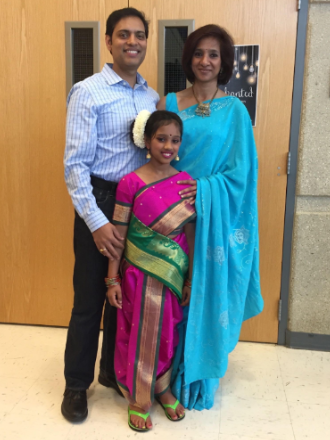
In the Vanukuru household, junior Mahika Vanukuru is raised with many expressions of love that differ from those in a typical American household.
“Living in America and growing up here, and then going to school and hearing about how other people interact with their families, it’s different,” Vanukuru said.
Unlike many families that express affection through hugs or gifts, in Vanukuru’s home, love is woven into the fabric of daily life. It shows in silent, steadfast acts of service—be it a meticulously swept floor, a freshly prepared meal, or the pride in a report card, beaming with excellence.
“I think my love language is acts of service,” she said.
Love can be seen in various forms inside the house and within the familial space. Yet, it can also be expressed in different places, whether out to dinner at a nice restaurant over good food and conversation or in an entirely different location across the country.
“One thing my family likes to do is travel a lot,” Vanukuru said. “We like to travel together, and it’s a big thing for my mom.”
While the ways Vanukuru expresses love within her family are not cumulative for her culture, they represent key aspects of love expression that many Indian-American families experience.
“My parents are more into American society and less traditional,” Vanukuru said.
Considering contemporary American society’s influence on family traditions and connections, it is evident that love will not always be shared in the same ways within the same culture. Within the Vanukuru household, continuing traditional cultural practices serve as a living bridge to their heritage. This dedication to cultural preservation is a testament to the family’s commitment to maintaining their ancestral customs in the modern world.
“There’s a very big thing about respecting your elders,” she said.
Mahika feels connected to her culture despite her physical distance from India and American culture’s influence on her family’s customs.
“We don’t celebrate Valentine’s Day; you know it’s just another day,” Vanukuru said.
So, while Valentine’s Day may not be a staple in every culture, love is still celebrated and appreciated around the clock and worldwide.
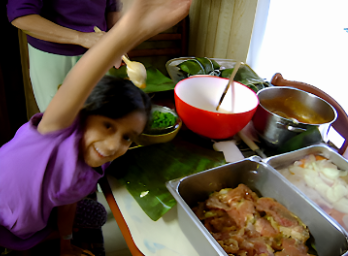
Vibrant colors and lively celebrations resonate through the streets of Colombian culture. Friends link arms as they enter parties on “El Día de Amor y Amistad,” the Day of Love and Friendship, an annual celebration on the third Saturday of September.
“There’s a lot of partying [in Colombia]; it’s just Colombian culture. People love to party and have fun. A lot of people over there are extroverted and like to have a good time,” junior Maria Panesso said. “[Colombians] do raffles at parties with actual good stuff. They [also] make a lot of food.”
Panesso believes that the generosity displayed by Colombians during parties reflects their overall loving and generous nature.
“[Colombians] give without expecting anything in return,” Panesso said. “My great aunt [and] her family would give other families nearby their produce because [she] had a farm. My great aunt still remembers all her neighbors’ and their children’s names.”
Generosity within the community is necessary to support the community’s nexus — especially due to an ineffective and corrupt government, according to Panesso.
“A lot of people [in Colombia], especially nowadays, are poor and [have] struggles. The government is corrupt. People can barely get a job and money. There’s a lot of inflation over there right now, so even getting a simple egg costs so much money,” Panesso said. “If you can’t expect anything from the government, you can only expect from the rest of us citizens. It’s a moral thing: people feel [that] by giving to other people, [they] better the community.”
Cooking is also a powerful language of love, as individuals invest their hearts in preparing meals for their families. Panesso fondly reminisces about her grandmother’s heartfelt and meaningful baking.
“I remember my grandma used to make vanilla raisin cake for me. She would make it often and teach me how to do it, and it was made with love. They don’t have to say it’s made of love because you already know it’s made with love,” Panesso said.
However, as she delves deeper into the cultural nuances, Panesso acknowledges the role of societal norms in Colombian culture.
“Women mainly cook because of societal norms. Women do all the chores for the most part. From a young age, you’re taught to be a housewife and be submissive to your husband. I feel like people don’t value women enough, [in] my culture, even though [women] do a lot of stuff,” Panesso said. “I feel like these societal norms are a common part of love around all cultures. Women don’t get treated well enough [due to] misogyny.”
Love manifests in various practices within Colombian culture, with culinary traditions and acts of generosity playing a significant role in expressing affection. Social expectations also influence these expressions, often emphasizing women’s roles in nurturing and caregiving. This emphasis can be seen in Introduction: Violence against Women in Latin America, which sheds light on the societal norms regarding gender roles. Despite the complexities these expectations may introduce, “familismo” is a deeply rooted value in Colombian and Latino culture, emphasizing strong loyalty, close relationships, and active contribution to the well-being of both nuclear and extended family networks, as evidenced by Cauce and Domenech-Rodriguez in Latino families: Myths and realities.
“It [was] always emphasized that no matter what — [whether for] your siblings or your family — you should still love them. [Colombian culture] puts family love over other types of love,” Panesso said.
Panesso’s recollection transports us to a pivotal moment in her family’s history when a heated discord between a brother and a sister threatened to tear the family apart. Then, the elders intervened with a unique approach to mending rifts, a remedy that underscored their profound importance on the bonds of family love.
“As punishment for them not getting along, they were tied up together until they were forced to say ‘I’m sorry’ and hug,” Panesso said.
The lesson was clear — no matter the disagreements, misunderstandings or conflicts that may arise within the family, love between family is vital.
Colombian culture is woven through with threads of love — a love that is generous and resilient, often triumphing over societal and familial challenges. Panesso’s story has shown how traditions serve as a backbone for a community that cherishes its familial bonds, celebrating them as a cherished cornerstone, even amidst life’s inevitable complexities. Colombian love, with all its layers, continues to be a testament to the enduring strength found in the hearts of its people.
For the Nguyen family, love is expressed through sacrifice.
“For parents and children, a lot of it is sacrificing what you can to ensure the other has success in their life and making sure that you can do everything you can to give that to them,” sophomore Katherine Nguyen said, “Kind of like gift giving in the sense of ensuring that people have their future and the resources needed to accomplish that.”
For Nguyen and her siblings, oftentimes, her parents will showcase their gratitude for them by making homemade meals prepared with care and love.
“My mom always loves to make us food, and that’s how she cares for us,” Katherine said.
Nguyen details how her love language is one of support and empathy, showing her affection for loved ones by ensuring they have a shoulder to cry on and an ear to listen.
“For me, I provide my support whenever someone needs it and make sure I’m always reaching out to people,” she said. “In my family, if someone’s having trouble emotionally, I’ll always be there to talk to them and try to be someone they can trust and rely on at that moment.”
While Nguyen’s immediate family can feel her warmth and support daily, her extended family receives a different kind of love from her.
“We live pretty secludedly from a lot of my family like I have family in Portland and Houston. So, I try to show my love [by] reaching out and maintaining contact. My sister is in Vietnam right now, so we always maintain contact and make sure that we talk to each other, even though we’re far apart.”
Love is shown through various silent yet powerful actions expressed throughout the year.
Nguyen, from a Vietnamese-American family, observes that love is often more of a nonverbal exchange between loved ones rather than a blatant verbal display of affection.
“In general about love, I’d say, in the Asian American community and my family, there’s a lot of talk about love being expressed nonverbally. And that can be both an issue and also a good thing at the same time. Even though it might be hard to express our love through words, we still make sure it’s there,” Nguyen said.
However, Nguyen mentioned that her family is more acclimated to American culture, often expressing their love within their nuclear family traditions.
A $50 or more donation includes a subscription to the Clayton High School Globe 2024-2025 print news magazine.
We will mail a copy of our issues to the recipients of your choice.
Your donation helps preserve the tangible experience of print journalism, ensuring that student voices reach our community and that student democracy thrives.






